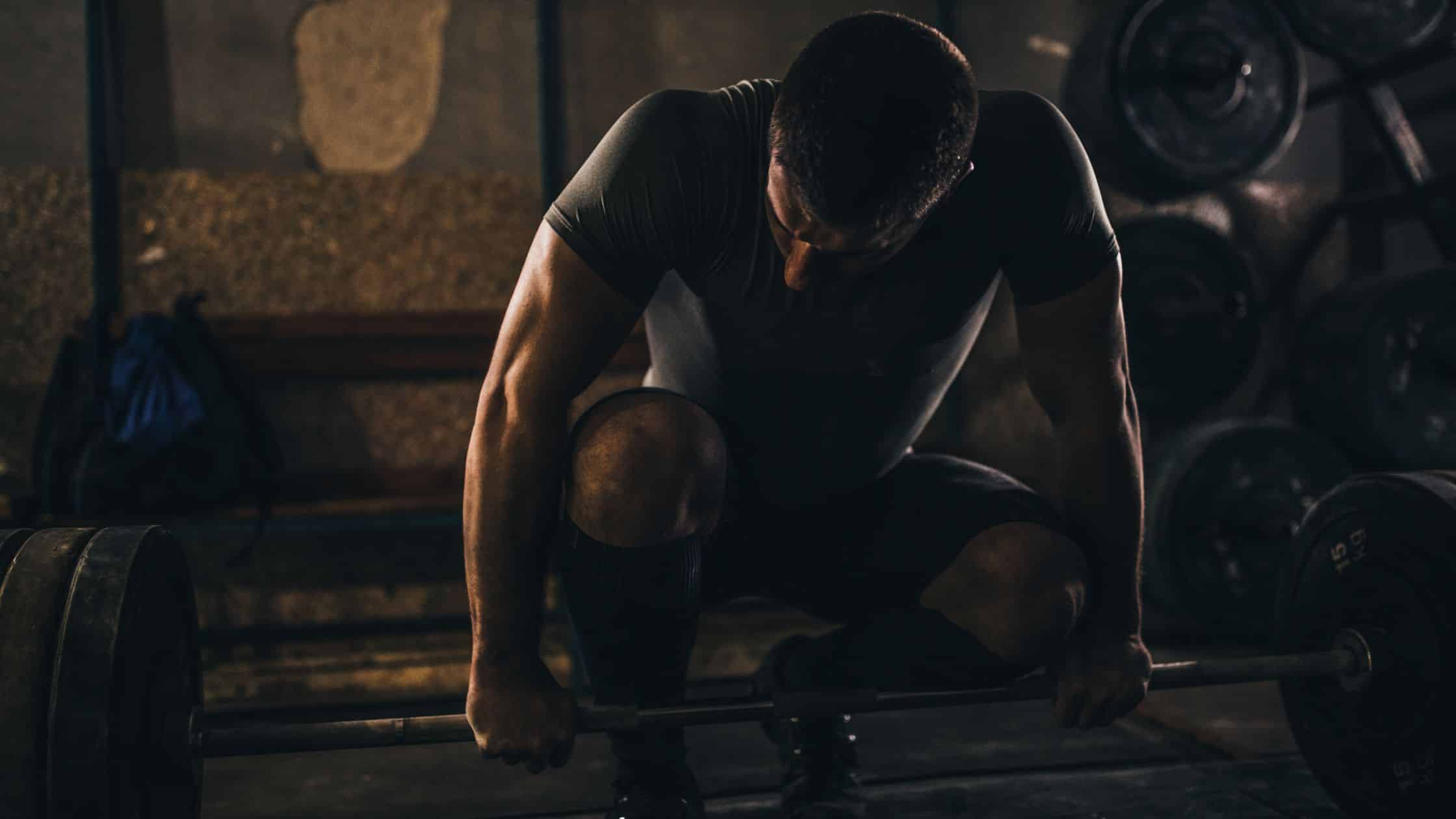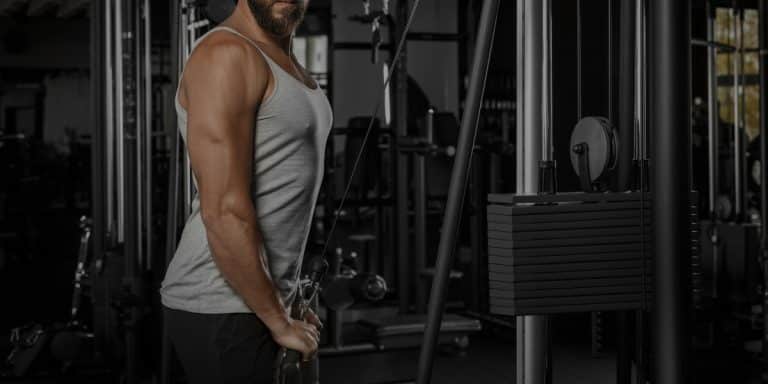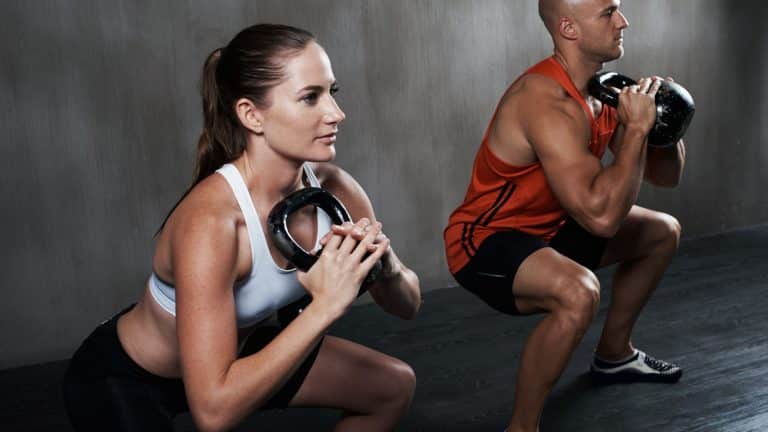Resistance Training To Raise Your Testosterone Levels Naturally
Expert James Dixon explains how you can use resistance training to raise your testosterone levels naturally, why it’s effective, and what optimised T-levels can do for you.
It’s a good idea for all of us to work at optimising our testosterone levels, especially for men. It will help us pretty much across the board, giving us better physical, mental, and sexual health in a wide array of areas.
There is a lot that you can do to optimise your natural testosterone output. I have done most of it. In the process, I’ve brought my own testosterone output from a borderline medically low 10 nmol/L to an almost medically too high 30-34 nmol/L. My physical and mental wellbeing are like night and day compared with before.
A good diet that’s rich in proteins, healthy fats, zinc and vitamin D, and lacking in ultra-processed foods, sugar, and alcohol is an effective implementation that can naturally uplift your testosterone levels.
Low stress levels, plenty of sleep (7-9 hours per night), and clever supplementation (there are loads of decent natural testosterone boosters out there) also play pivotal roles.
So too does exercise, particularly resistance training.
We all need to do some form of resistance training if we are to optimise our testosterone output in the long run.
Exercise’s impact on your testosterone levels
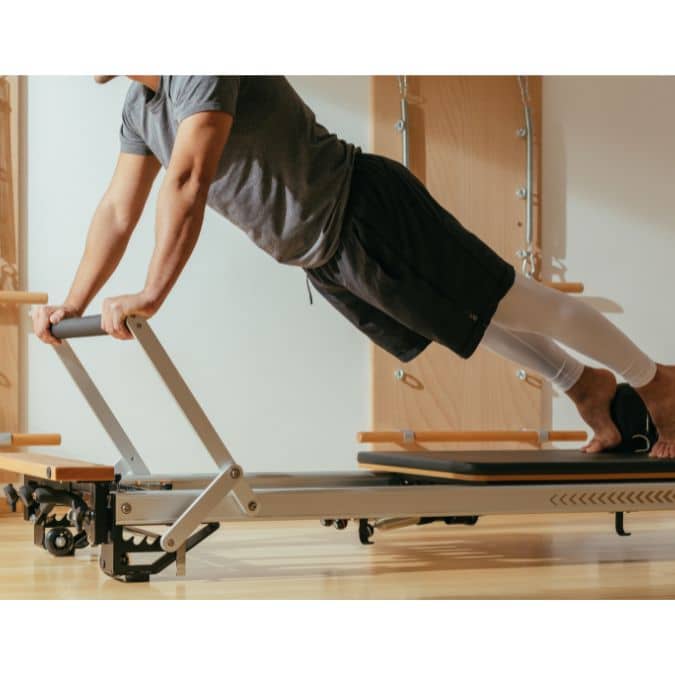
Taking part in regular exercise has been shown to have a significant impact on your testosterone levels.
Testosterone is a vital hormone that plays a crucial role in various bodily functions, including muscle development, bone density, and libido. You need to be producing it in adequate quantities to remain healthy. Or, rather, you need to produce it in optimal quantities if you want to optimise your health and wellbeing.
Several studies have indicated that long-term exercise can lead to an increase in testosterone levels in men. This suggests that consistent exercise can help in maintaining healthy testosterone levels.
This is particularly true of resistance training. By this, I mean anything that regularly pushes your muscles to failure, or near failure, in short bursts, through full ranges of motion.
Think weightlifting and strength training, or bodyweight work like calisthenics, Pilates, and more vigorous forms of physical yoga practice. These will all have a more immediate impact on your testosterone levels.
Research bears this out pretty incontrovertibly. A wealth of clinical data shows that resistance exercise can stimulate the release of testosterone in both men and women. This hormonal response is often associated with muscle tissue repair and growth, as well as improved strength and performance.
While the relationship between cardiovascular exercise and testosterone levels is less clear, some evidence suggests that higher-intensity cardiovascular training can make a positive impact. However, this is generally cardiovascular training forms that use resistance methods – HIIT, giant sets, circuit training, and so on. Steady-state cardio – jogging, cycling, etc – has a less clear direct relationship to testosterone output.
I would note, though, that steady-state cardio will likely have a strong non-direct, positive relationship with your testosterone output. Obesity can lead to greatly impaired testosterone output.
Steady-state cardio is a good tool for anybody looking to overcome obesity. Indeed, in the early days of weight loss, it’s often the only safe form of exercise for many obese individuals.
Regular exercise, particularly resistance training then, has a significant relationship with testosterone output. Engaging in consistent exercise routines can help maintain healthy testosterone levels, support muscle development, and enhance overall wellbeing.
However, there are more variables at play than simply resistance exercise vs non-resistance exercise vs a sedentary lifestyle. One of the big variables centres on intensity – your training intensity can make or break your testosterone optimisation.
Exercise intensity and testosterone output

Several studies have shown that exercise intensity can influence testosterone levels. As a good rule of thumb, the more intense the exercise form (within reason), the better it will stimulate your testosterone output to higher natural levels.
High-intensity workouts, such as weightlifting, interval training, and sprinting, have been found to trigger a significant rise in testosterone levels immediately after the exercise session. This hormonal response is believed to be a result of the body’s adaptive mechanism to the stress placed on the muscles and the need for repair and growth.
The combination of heavy weights and low repetitions, commonly associated with strength training, is particularly good. I deadlift and squat heavy most weeks, and focus mid-reps to failure across my full body as part of my regular fitness plan.
It has helped me to boost my testosterone output significantly – this hormonal response is crucial for muscle hypertrophy and strength gains, giving you a virtuous cycle, as well as everything you need to be healthy and well across every the sphere influenced by your testosterone output.
Moderate-intensity exercises like jogging or cycling have shown more mixed results in their impact on testosterone levels. This kind of exercise may not cause a significant increase in testosterone levels immediately after workouts. However, they may still contribute to overall hormonal balance and metabolic health.
Duration and frequency of training is also important. One heavy lifting session per week surrounded by complete sedentariness will likely not do too much. Three sessions per week with active recovery will do a lot.
Ten minutes lifting won’t accomplish much. Two hours of light lifting won’t accomplish much. An hour, hitting 20 total sets, will. Short but intense workouts have been found to be more effective in boosting testosterone compared to longer, lower-intensity activities.
Consistent exercise over time, regardless of intensity, has also been associated with better testosterone profiles. This includes moderate-intensity exercise, once more giving it a potential place in hormone balance and metabolic health.
Resistance training and testosterone output
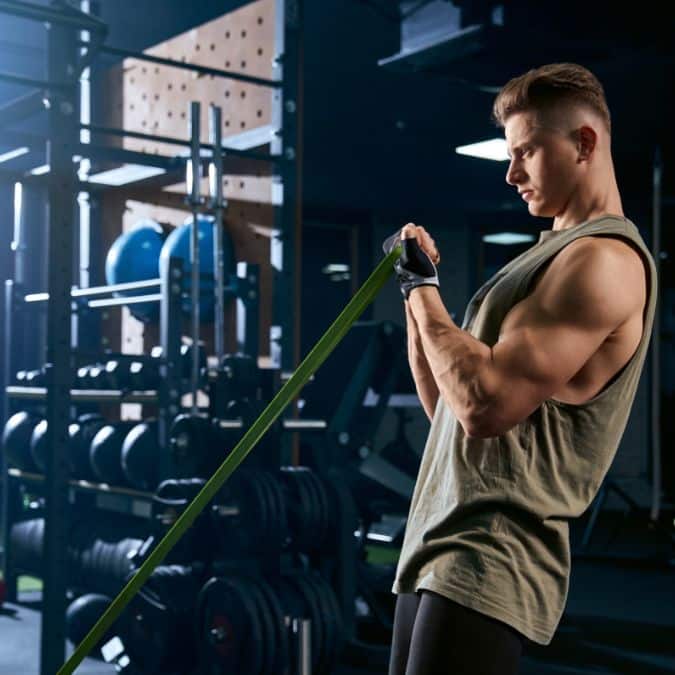
So, by now we know that we need high-intensity training in our regular regimes. This means some form of resistance training.
Resistance training refers to a form of exercise that involves using resistance, such as weights or resistance bands, to contract and strengthen the muscles. It is primarily aimed at improving muscle strength, size, and overall fitness.
In fact, resistance training is often synonymous with strength training or weightlifting. In this guise, it has long been recognised as an effective method for improving muscle strength, size, and overall fitness.
However, resistance training can also mean bodyweight exercises and their like – anything that consistently uses a wide range of muscle mass under load, often to near failure, through wide ranges of motion. This opens you up to formats like calisthenics, Pilates, and more vigorous forms of yoga practice.
However it looks to you, resistance training will play a significant role in boosting testosterone levels.
The mechanical tension created during resistance training activates some of your body’s chemical signalling pathways. This in turn should stimulate testosterone production and release. The resulting increase in testosterone output – and, thus, to total levels – will lead to enhanced protein synthesis, which helps build and repair muscle tissue.
And, of course, this response to resistance training is not limited to immediate effects. Studies have shown that consistent resistance training over time can lead to a significant increase in baseline testosterone levels. This means that taking part in regular strength training exercises of any kind – provided they are high-intensity – can lead to better optimised testosterone levels in the longer run.
Specific variables are very important in your training routine as it applies to testosterone optimisation. These variables include the likes of exercise selection, intensity, volume, and rest periods. They will all play active, significant roles in modulating your hormonal response.
For example, compound exercises that engage multiple muscle groups simultaneously, such as squats and deadlifts, have been found to elicit a greater testosterone response compared to isolation exercises like bicep curls. And, of course, higher-volume, higher-intensity sets will be more effective than lower-volume, lighter, less intense sets.
Resistance training’s impact on testosterone levels is not limited to men – far from it. Women will also experience an increase in testosterone production in response to resistance training. It will just be to a lesser extent than men, in keeping with their lower overall natural testosterone output.
This increase in testosterone can contribute to improved muscle tone, strength, and overall body composition in women – just, again, to a lesser degree than men will see.
How to optimise your training for optimised testosterone output

You need to bear these variables in mind when putting your exercise plan together. If in doubt, chat to a couple of personal trainers at your local gym. A competent one will be able to help you put together a proper, periodised training plan with your personal needs in mind.
A good plan will account for multiple factors, including exercise selection, intensity, volume, and rest periods.
Let’s talk about exercise selection first. Of course, this means a larger consideration of the form of training you want to take on – resistance training or non-resistance training? (As we’ve seen, both play their roles, though resistance training is at least immediately more effective for testosterone optimisation).
Then there is the style within this – are you going to be a powerlifter, bodybuilder, Strongman, power builder… the list goes on.
Then, within this, you need to choose the exact exercises you’re doing. I would recommend building a resistance training program with both strength and hypertrophy in mind.
Focus on a heavy compound in each session – I work a three-day split working full body, but focusing each on either the squat, bench, or deadlift. This can include leg presses, front squats, walking lunges, hack squats… chest press machines, cable presses, incline dumbbell presses, dips… trap bar deadlifts, cleans, rack pulls, deficit deadlifts… but, at heart, each one is built around a heavy compound movement.
Intensity is another critical factor to consider when optimising exercise routines for testosterone benefits. High-intensity exercises like weightlifting and HIIT have been shown to promote greater testosterone production compared to low-intensity exercises like walking or cycling. This is why we’re really looking at resistance training over steady state cardio.
However, you want to oscillate a bit.
I will go very intense in my compound lifts. Of these, I will go more intense in one session each week, working hardest in each primary movement in consecutive weeks. Week A may be heaviest on squats, week B on deadlifts, week C on bench press, and so on.
Then there is volume. One set will not do it. However, if you can hit a body part with 50 sets per week, you’re likely not working each rep hard enough (or you’ve got freaky genetics and/or are using performance enhancers, which I’m writing this article assuming isn’t the case).
Studies have shown that moderate-to-high volume resistance training (between 3 to 5 sets per exercise) can lead to significant increases in testosterone levels. Anything more may lead to injury. Aim for around 20 total sets per session, spread over 4-6 exercises (some programmes will give more or less, but this is a good starting point).
Rest periods also play a crucial role in testosterone response. Longer rest periods have been found to promote greater testosterone production compared to shorter rest periods.
In resistance training, rest periods of at least 2 to 3 minutes between sets can help maximise the hormonal response. On the other hand, shorter rest periods are often used in HIIT to promote cardiovascular endurance, but this can come at the expense of suppressing testosterone production.
Active rest days are also crucial. I only lift heavy three times per week. The other days I focus on yoga and walking to keep my muscles active, warm, and recovering well, without overtaxing – this overtaxing can lead to an immediate and dangerous testosterone crash.
Recovery and sleep are important considerations. As well as this active recovery, I try to sleep plenty. 7 to 9 hours per night will be perfect both for optimising testosterone output and for overcoming the fatigue and allowing for the adaptation inherent to resistance training.
A final thought
Optimising your training in a bid to optimise testosterone output involves a multifaceted approach. Various factors are at play. Resistance training, focusing on compound exercises and moderate-to-high intensity are all key for stimulating testosterone production.
Balancing volume, rest periods, and nutrition is crucial to avoid overtraining and support muscle growth. Adequate recovery and sleep play a pivotal role in optimising testosterone response.
While individual variability exists, following these evidence-based strategies and recommendations can help you tailor your exercise routine for optimal testosterone levels, leading to improved muscle strength, size, and overall fitness.
With dedication and a well-rounded approach, you should be able to make the most of an active lifestyle whilst also fully optimising your testosterone output – and, thus, your overall health and wellbeing.

